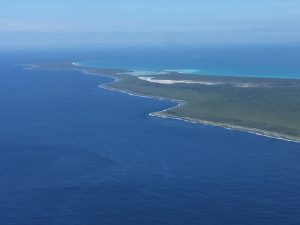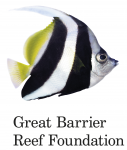Managing Tourist Behavior
Strategies for Shifting Tourist Behavior to Better Meet Local Resilience Goals
Tourist behaviors can negatively impact the local environment and communities. Direct negative impacts from tourists at reef sites can include trampling of corals and dunes, increased pollution, boat-related damage including anchor damage, vessel groundings, or collisions with marine species, and the introduction of invasive species. Changing tourist behavior and eventually shifting social norms at sites can minimize the negative environmental impacts of tourism and optimize benefits for reefs and local communities.
Topics explored during the 2021 Solution Exchange included potential methods for persuading, motivating, or otherwise enabling tourists to change their behavior.
Key Takeaways
- It is important to understand what is meant by behavior. Behavior is an observable action – what you see someone doing – but often people confuse this with attitudes, awareness, feelings, values, or identity. Therefore, behavior change is seeing a change in someone’s actions.
- Small incremental steps over the long term are required to change people’s behavior and shift social norms. Reef managers can help make these changes by focusing on people’s actions. There are many things that influence people’s behavior, including attitudes, capability, opportunity, social norms, and the unconscious influences: context, biases, emotions, and habits. Therefore, just because you inform or educate someone does not mean they will change their behavior.
- Identify and define the exact behaviors you want to change. Keep drilling down and be specific (i.e., who, where, when, what) about the behavior as this helps target it.
- Understand the behaviors, the drivers behind them, and the perspectives of the people whose actions you are trying to change. What motivates you to behave in a certain way may not motivate someone else who has different life experiences. Try to understand the behavior from the audience’s perspective, and then design a behavior change program that matches what we understand now from the audience’s perspective.
- To help change people’s behavior: 1) Keep messaging simple and focus on outcomes instead of complex science, 2) Use local champions (e.g., church leaders or well-known people from the community), and 3) Use pledges (or something similar) to make the message mainstream. See examples of behavior change campaigns and watch a webinar on the 4Fiji Campaign.
- Continually promote best practices in the community. It is critical to repeatedly promote best practices and have a sustained dialogue to effectively embed messages into the communities and shift social norms. This can be done on several different platforms, and if this is done successfully, eventually behavior change funding should no longer be required.
- Encourage outreach in local schools. To effectively utilize students, be specific about the type of behavior you want to change because children can be influential at changing certain behaviors in adults, but not others.
- Local and international/distant tourists will respond to different messages. Local visitors might respond better to messages about the value and identity of the place, while international/distant tourists might respond better to messages about improving their visitor experience.
Spotlight on New Caledonia
How can we develop our tourism sector sustainably?

Photo © Amy Armstrong
The Lagoons of New Caledonia in the South Pacific has 1,574,300 ha of reef and became a UNESCO World Heritage site in 2008. While tourism is earmarked to be an important future driver of the economy, it is currently a relatively little developed industry making up only approximately 4.1% of New Caledonia’s gross national product.
New Caledonia is looking for creative ways to grow their tourism sector to generate income and support livelihoods in a sustainable way. While growing the tourism sector, New Caledonia stakeholders want to ensure they maintain the ecological and cultural values of the many islands. Part of this challenge is to develop ways to persuade visitors to behave in a respectable manner around significant cultural and ecological sites.
Since the tourism industry in New Caledonia is still relatively undeveloped, the COVID-19 pandemic did not have a large impact on the economy of the country like some other RRI sites.
Presentations
Watch the presentations by Solution Exchange experts in English or French to learn more:
Une introduction aux comportements des visiteurs et ce qui les influencent – Mark Boulet, BehaviourWorks Australia, Monash University
Les îles Fidji réimaginent les campagnes de sensibilisation pour des changements de comportements durables – Scott Radway, cChange
Gestion et protection – Fiona Merida, Great Barrier Reef Marine Park Authority
Advancing Sustainable Tourism Strategies
The Solution Exchange was intended to inspire thinking, bring together the Resilient Reefs Initiative managers and partners for knowledge exchange and learning, and help catalyze action on the ground. Toward that end, here is the potential next step that was identified during discussion about changing tourist behavior:
Identify opportunities for shared messaging about appropriate tourist behavior across the UNESCO World Heritage Marine sites.
Acknowledging how commonly shared these challenges are, there was discussion about the potential to develop some common messages around appropriate tourist behavior across the UNESCO World Heritage Marine sites, specifically leveraging work already done on the Great Barrier Reef.
 This content was developed in collaboration
This content was developed in collaborationwith Great Barrier Reef Foundation.
